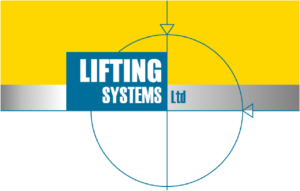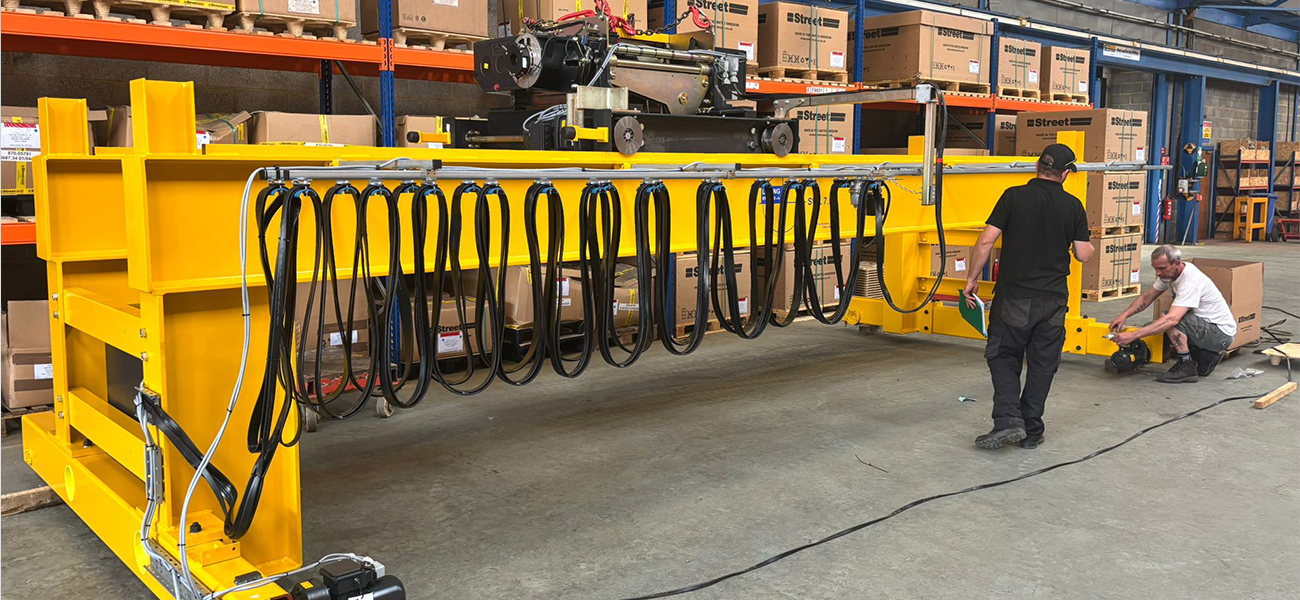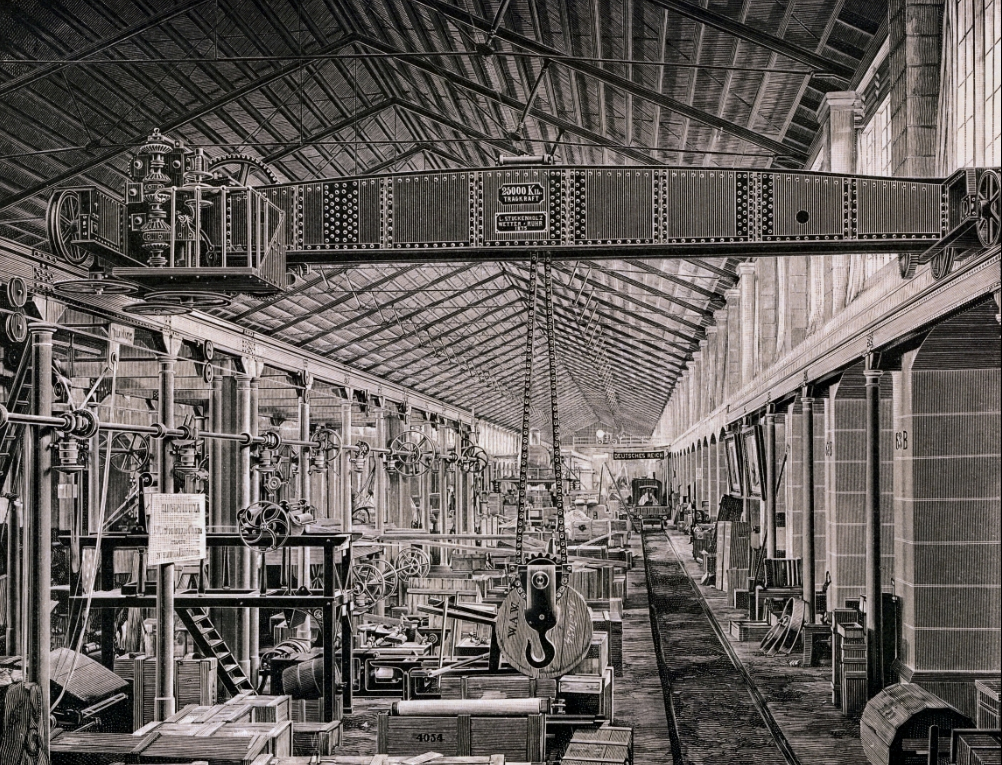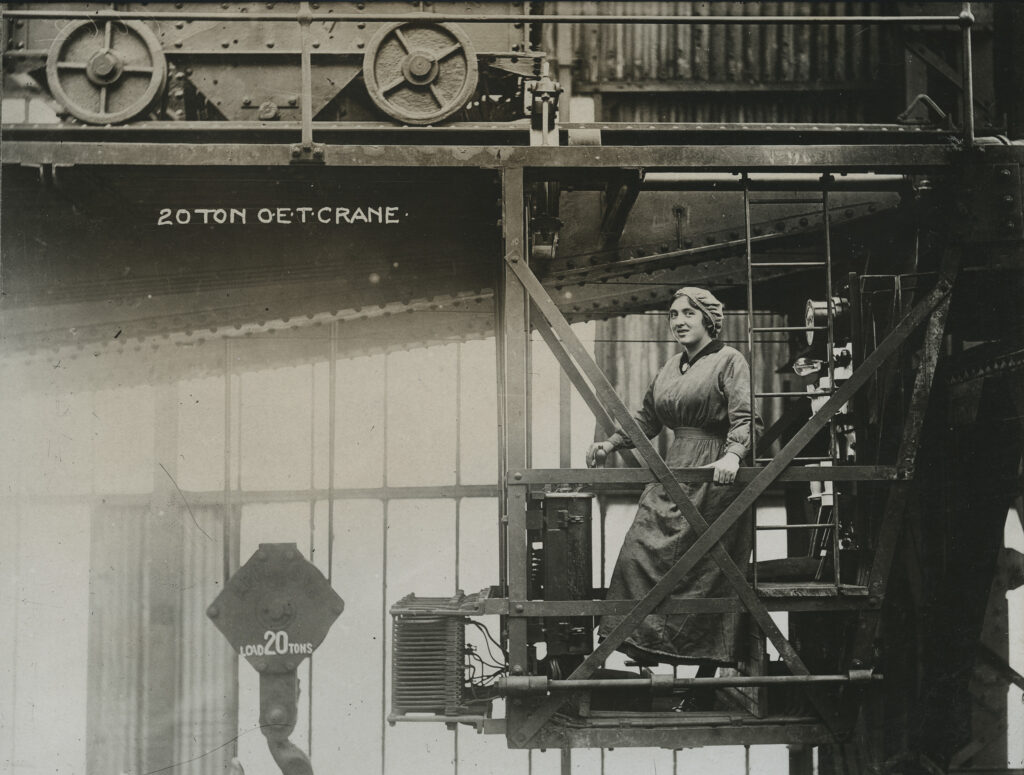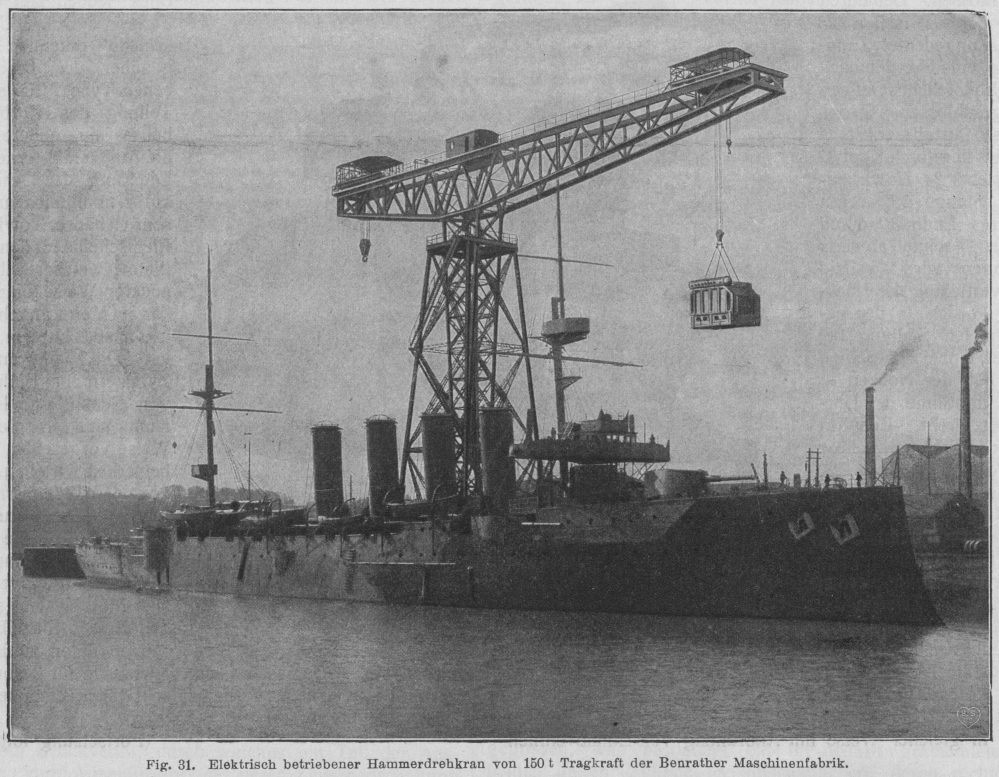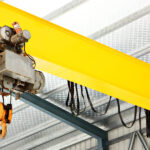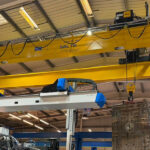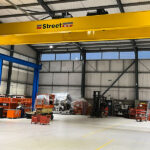When you’re evaluating a lifting systems partner, understanding where overhead cranes and overhead gantry cranes come from gives you confidence in assessing legacy, reliability, and technological depth. From the rope and timber lifting methods of ancient Egypt, where workers used ropes, wooden davits, and counterweights to raise massive stone blocks, to today’s digitally connected lifting systems, the evolution of overhead crane technology tells a remarkable story of human ingenuity and engineering progress. Here’s a concise historical timeline, with insight into what matters for your next overhead crane investment.
Ancient Beginnings: Rope, Timber and Ingenuity (Before 500 BC)
The story of lifting systems begins long before steel or steam, tracing back to the world’s earliest civilisations.
In Ancient Egypt, builders used an ingenious combination of ropes, timber davits, counterweights, and manpower to lift and move the enormous limestone and granite blocks that built the pyramids. Though primitive by today’s standards, these early devices relied on the same basic principles of leverage and load distribution still used in cranes today.
Later, similar rope-and-pulley mechanisms were adopted by the Greeks and Romans, evolving into treadwheel cranes and compound pulley systems that offered a significant mechanical advantage. These ancient systems laid the groundwork for the first true cranes of the pre-industrial world, the foundation on which modern overhead lifting systems were eventually built.

1. Early Origins & Mechanical Lifting (pre-1800s)
The Greeks and Romans refined mechanical advantage via compound pulleys and treadwheel cranes. These primitive systems laid the conceptual foundation for modern cranes. Emerson Cranes+2Armquest Industrial Services+2
By the 19th century, more purpose-built dockside cranes appeared, driven by manpower or simple gearing. Among the notable British designs was the Fairbairn crane, patented around 1850 by Sir William Fairbairn, featuring a curved box-girder jib that could reach further into ship holds. Wikipedia
2. Steam Power & the First Overhead Cranes (mid-1800s to late 1800s)
The Industrial Revolution brought steam power into lifting systems. The Ludwig Stuckenholz company in Germany was among the first to produce overhead cranes in the 1830s; by the 1840s, mass production of overhead cranes was underway. Tekwell+2Zenar Crane+2
In the UK, a significant milestone occurred in 1861: John Ramsbottom installed what is considered one of the first steam-powered overhead cranes in the Crewe railway workshops, using a drive via an endless rope from a stationary steam engine. Wikipedia+2LinkedIn+2
These steam overhead cranes allowed heavier loads, longer spans, and better horizontal movement — paving the way for more complex industrial operations.
3. Electrification & Standardisation (late 1800s to early 1900s)
Electric motors first appeared in overhead crane design in 1876, courtesy of Sampson Moore in Liverpool. His crane hoisted guns at the Royal Arsenal in Woolwich, an early electric overhead crane prototype. Granada Cranes+4Tekwell+4Zenar Crane+4
By 1887, electrical components had become more commonplace in German cranes, influencing design standards across Europe. Granada Cranes+2Tekwell+2 By 1910, mass-produced electric motor hoists emerged, helping to standardise overhead gantry crane components and making electrified lifting systems more accessible to factories. Tekwell+2Zenar Crane+2
4. Landmark UK Cranes & Industrial Icons
Over the 20th century, Britain produced its share of engineering marvels. The Titan Crane in Clydebank (completed circa 1907) was a pioneering electrically powered cantilever crane used for lifting heavy machinery into ships. Wikipedia Another example: the Fairfield Titan on the Clyde was built in 1911 by Sir William Arrol & Co. Wikipedia
Similarly, the Beardmore Crane at a Scottish shipyard featured dual cantilever jibs — a bold structural design of its time. Wikipedia These cranes weren’t just lifting tools; they were statements of industrial ambition, combining structural engineering, material science, and power systems.
5. Modern Era: Smarter, Stronger, Connected
Today’s overhead cranes and overhead gantry cranes are far more than steel and motors. They’re integrated into lifting systems with smart controls, remote monitoring, vibration sensors, regenerative braking, and predictive maintenance analytics.
For a facility manager evaluating suppliers today, these features are non-negotiable. You want a partner whose roots reach back through decades of evolution, but who also leads in digital lifting innovation.

Curious how your next overhead crane or gantry system compares in heritage and innovation? At Lifting Systems, we combine proven mechanical heritage with modern control systems and service support. Talk with us, we’ll help translate crane history into better decisions for your facility.
FAQs
1. What is the history of the overhead crane?
Overhead crane history stretches back thousands of years, from ancient Egyptian lifting methods using ropes and timber to the first steam-powered cranes of the 1800s. Early designs like the Fairbairn crane and later electric cranes by Sampson Moore in Liverpool shaped the equipment we use today.
2. Who invented the first overhead crane?
The first electric overhead crane was built in 1876 by Sampson Moore in Liverpool, designed for the Royal Arsenal in Woolwich. Earlier steam-powered systems appeared in the mid-1800s in Europe.
3. What is the difference between an overhead crane and a gantry crane?
An overhead crane is mounted to building structures and moves along elevated runways, while a gantry crane is supported by freestanding legs running on rails at floor level.
4. How have modern lifting systems evolved?
Modern lifting systems include advanced control panels, load monitoring, safety sensors, and predictive maintenance tools — offering greater reliability, precision, and compliance with LOLER and PUWER standards.
5. Where can I find a reliable overhead crane supplier in the UK?
Lifting Systems provides design, installation, and maintenance of overhead and gantry cranes across the UK, combining decades of industry experience with modern technology.
